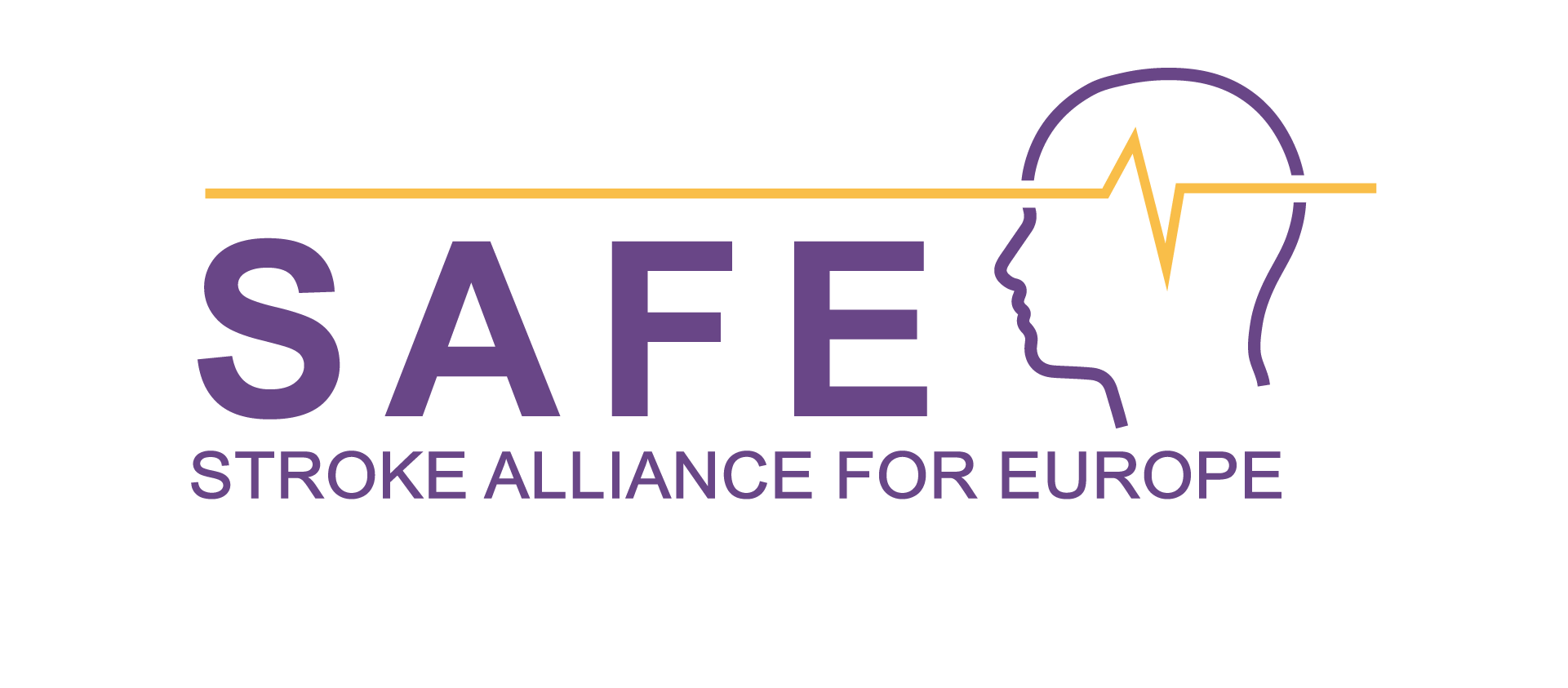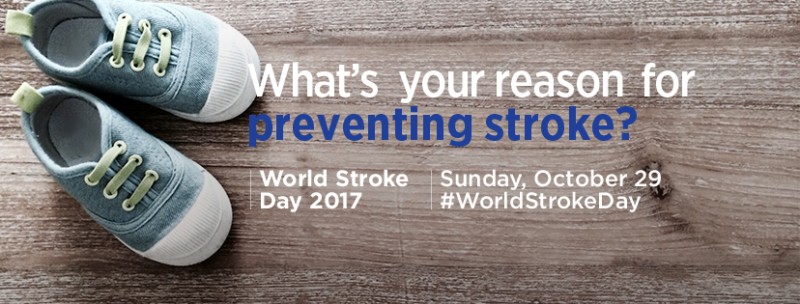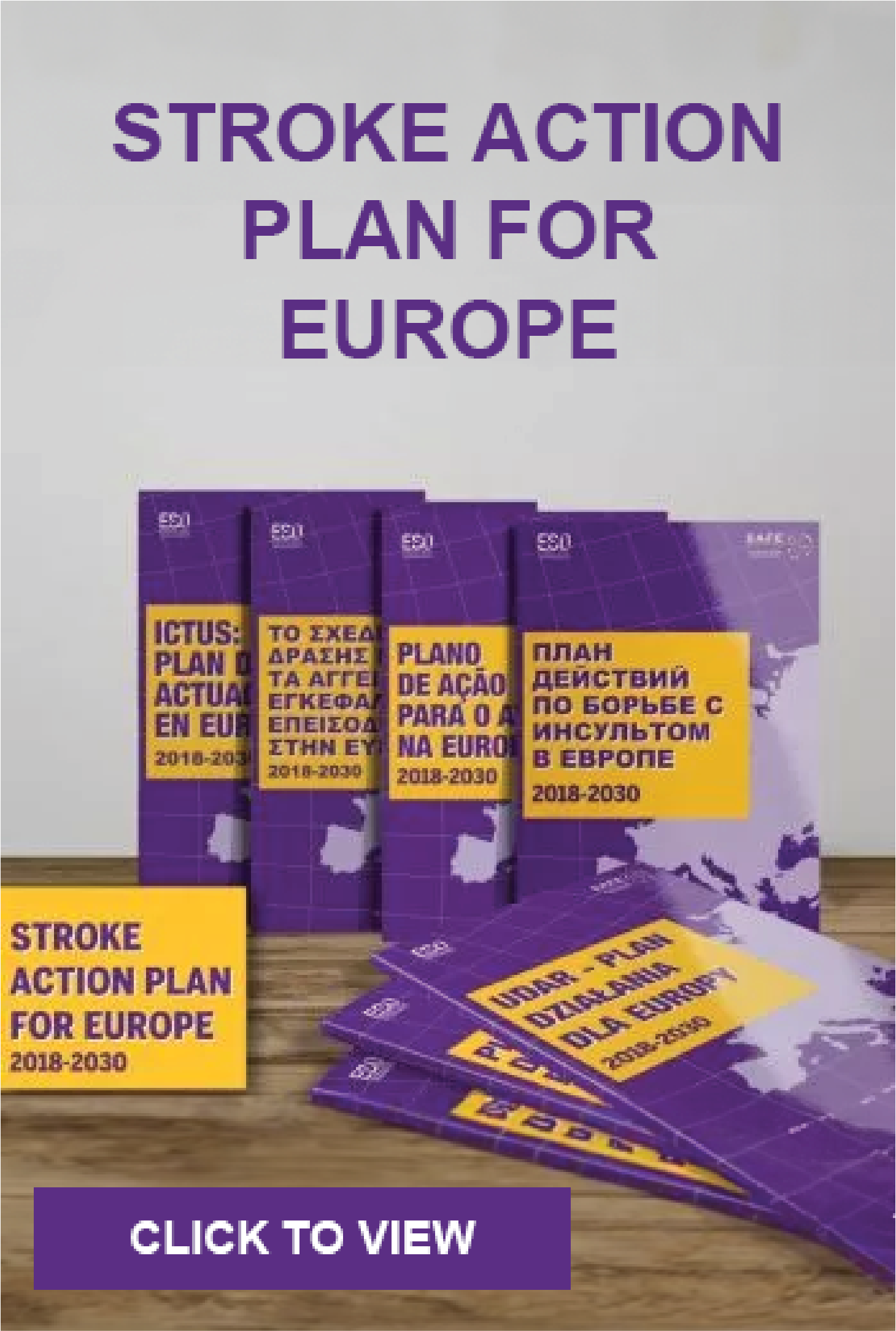“WHAT IS YOUR REASON TO PREVENT STROKE?”
“One day we will be able to talk about a stroke and what it used to be and how we had a hand in stopping them.” – Brady Johnson, stroke survivor
Brussels, October 29, 2017: Good news is that stroke is preventable, with ten modifiable risk factors accounting for around 90% of the risk of stroke. Bad news is that we still largely fail to prevent it. On this World Stroke Day, we call upon Governments and health care system decision makers to implement population wide prevention strategies that address the biggest contributors to stroke- said Jon Barrick, SAFE President, adding that healthcare, researchers, stroke survivors and support organisations should all work together on developing and delivering effective national, regional and global stroke prevention strategies and campaigns.
 The Burden of Stroke Report, launched by SAFE in May this year in the EU Parliament, showed that one of the main problems when it comes to fighting stroke today is lack of public awareness of stroke as a disease and its adequate prevention.
The Burden of Stroke Report, launched by SAFE in May this year in the EU Parliament, showed that one of the main problems when it comes to fighting stroke today is lack of public awareness of stroke as a disease and its adequate prevention.
“Stroke doesn’t just affect the stroke survivor. Therefore, fighting this dreadful disease is not a one person’s job. Think of it as if it is a terrorist inside a human brain. Same as fighting terrorism, the best way to fight stroke is to prevent it”, said Jon Barrick.
The Burden of Stroke Report showed that most European countries have undertaken educational campaigns that aim to raise awareness of stroke risk factors and encourage people to adopt a healthier lifestyle, yet only some of them have been evaluated systematically. The few that have been assessed showed varied success with regards to risk factor knowledge or, even more importantly, behavior change.
About Stroke
Stroke is a leading cause of death and disability globally. Every year 17 million people suffer a stroke, out of which 6.5 million do not survive, while half of the survivors are left with some kind of a disability. It is estimated that there are around 26 million stroke survivors in the world today.
Stroke happens when the blood supply to part of the brain is cut off. Without blood, brain cells can be damaged or die. This damage can have different effects depending on where it happens in the brain. It can affect a person’s body, mobility and speech, as well as how they think and feel.
About SAFE
The Stroke Alliance for Europe (SAFE) a non-profit-making organisation formed in 2004. It is the voice of stroke patients in Europe, representing a range of patient groups from 26 European countries.
SAFE’s goal is to decrease the number of strokes in Europe by advocating for better prevention, access to adequate treatment, post-stroke care and rehabilitation.
Since it was founded in 2004, SAFE has grown from six to 30 stroke support organisations, covering 28 European countries.
Earlier in the year SAFE published the Burden of Stroke Report which considers the many issues about stroke in each European country.. As more people survive stroke, the burden of care and support is great and increasing.
The Report provides insights on stroke care pathway across Europe, resulting in an up-to-date report on: stroke incidence, prevalence and outcomes; policy; healthcare infrastructure, service provision and quality; and the uptake of new technologies.
For more information about stroke and World Stroke Day, please visit
https://www.worldstrokecampaign.org





